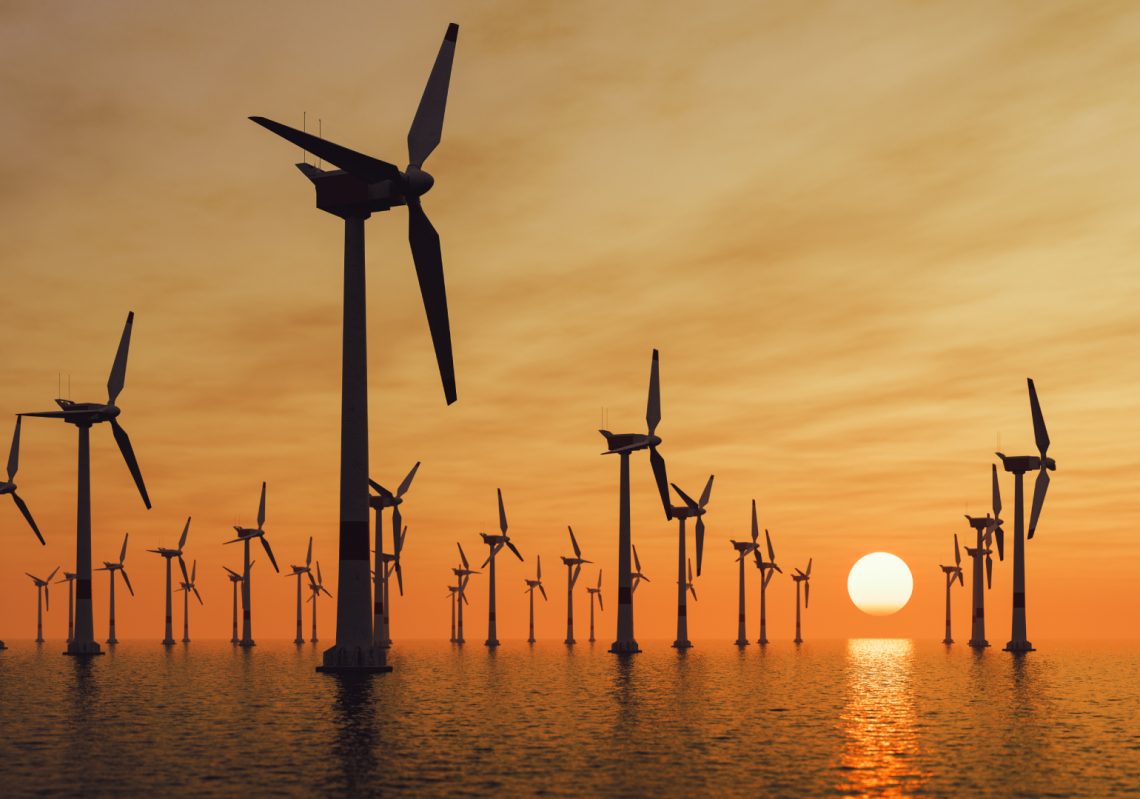Ahead of a special Engineers Australia webinar on Global Wind Day, a wind energy expert breaks down the huge potential for Australia to build its offshore wind capability.
Offshore wind power is a “treasure” waiting to be found, according to Engineers Australia member and Chartered engineer Satya Tanner MIEAust CPEng.
“Offshore wind is still very new in Australia compared to Europe, where it’s been going for about 20 years,” Tanner, who is Country Manager at renewable energy consultancy Lautec Australia and a former aerospace engineer in the RAAF, told create.
“The Bass Strait for example has prime conditions for fixed-bottom offshore wind in particular owing to consistent and high wind speeds. It’s an untapped treasure.”
As a result, she believes there is tremendous potential for Australia to embrace offshore wind as a source of renewable energy.
“That’s evidenced by the fact that so many developers recently applied for feasibility licences in the Gippsland declared area,” Tanner said.
Tanner foresees two key challenges for Australia’s participation in and engagement with industry players – a surplus of demand and a deficit of skilled workers.
“I don’t think we’re going to have a problem developing enough projects,” she explained. “There’s definitely no shortage of developers who are interested in the Australian market.
“The challenge that we face is more the opposite – people will want to develop projects in every space available where there is a takeoff opportunity. Because of long planning cycles and long development timelines, most projects take eight to 10 years to be established.”
Tanner also said that getting enough and the right feet on the ground was an issue across industries, including renewable energy – although there is a precedent for how to navigate that concern.
“The way that offshore wind started in Europe shows us that we don’t necessarily need to grow a technical force completely from scratch,” she said. “We can bring experienced workers across from other industries, particularly industries which might be experiencing a decline, and reorient their skills.
“I moved from aerospace to offshore when I was living and working in Denmark. People from many different industries, including those who’ve worked in oil and gas, move across to offshore wind.
“The good news is that with these projects being active into the future, kids in high school today have the potential to be the tradespeople and the engineers working on offshore wind projects in the future.”
Read more: Conditions look favourable for Australian offshore wind
Wind power webinar
Tanner will explore Australia’s future in offshore wind in more depth at an Engineers Australia webinar on Global Wind Day, Thursday 15 June.
Join Tanner for an unmissable session as she explores the enormous potential of offshore wind in Australia. The webinar will discuss:
- How offshore wind operates in Europe
- Progress of offshore wind in Australia
- The skills engineers require to work in this sector
- The future of offshore wind in Australia




I would like to ask and I think it would be of interest to all for a Wind Power Company to put live output data in the web where all can see it. This was done by University of Queensland for their Solar Farms and was very useful information, however it proved the inefficiencies of Solar so now they have discontinued it. I believe the same would happen to wind power. I believe wind and solar are useful as a supplementary supply as long as there is cheap efficient storage only.
I would like to ask for someone to be upfront and provide information to the public as to the amount of subsidies that have to be paid to provide wind and solar farms? Without these subsidies (our money) I seriously doubt any company would be pursuing these projects, and off shore windfarms seem to be the biggest waste of public money possible. (But maybe not including Snowy 2.0?). Our negligible emissions against say China mean that we are following a path to economic suicide to do what exactly? We certainly can’t change the climate. And maybe we shouldn’t as we are still coming out of the last Ice Age.
It continues to greatly disappoint me that our venerable Institution is so transfixed by this Net Zero fallacy. Why can’t alternative views be published and debated in our journals? Climate science is most definitely NOT settled!